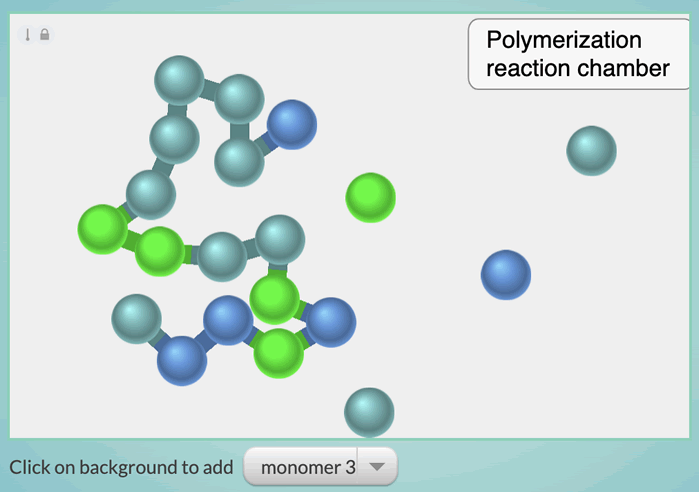Whether teaching physics, chemistry, or biology, every high school science teacher is challenged to take students on a journey down to the nanoscale level where intangible, invisible forces hold sway and mysteriously result in phenomena at the macroscopic level. Think Ms. Frizzle and her Magic School Bus as her schoolchildren take the ride of their lifetimes to the smallest of places.
Imperceptible to us, atoms and molecules interact according to rules that are mysterious to new learners, but nevertheless produce the familiar, everyday world we inhabit. In a simulated submicroscopic world, students have the power to interact and see the rules emerge from their experiments. The molecules of gases visibly respond to changes in volume, pressure, and temperature; the pairing of nucleotides carries the information that gives rise to proteins; the concentration of a chemical affects the rate of a reaction; and more. Learning about these fundamental interactions is a powerful key to our ability to understand and solve problems in a vast and complex universe.
We are excited to announce seven activities rooted in the science of atoms and molecules to help teachers guide their students’ journeys of discovery to this miniature realm. Originally developed by a National Science Foundation-funded project, the updated and upgraded web-based activities delve into the fundamental interactions of atoms and molecules on the way to explaining phenomena in physics, chemistry and biology. They are aligned to Next Generation Science Standards (NGSS) disciplinary core ideas, science and engineering practices, and crosscutting concepts. Simulations in each activity enable students to control various aspects of atomic and molecular-level events as they investigate and uncover the fundamental interactions resulting in observable phenomena. Each multi-page activity is designed to be completed in one or two class periods.

In the Introduction to Macromolecules activity, students are challenged to build different kinds of polymers from three different types of monomer units.
The activities include support and guidance for both students and teachers. Although you must provide your own magic school bus, the activities include examples of macro-level phenomena, simulations for exploration, prompts and questions, and embedded formative and summative assessments for students. Teacher supports are two-fold: an interactive Teacher Edition embedded in each activity presents tips, discussion prompts, and exemplar responses, and a real-time Class Dashboard allows teachers to monitor student progress and proficiency, and to provide individual feedback to students. Enjoy the ride!
The seven activities are: